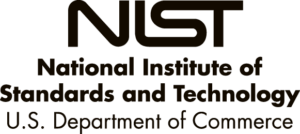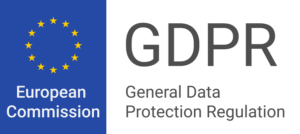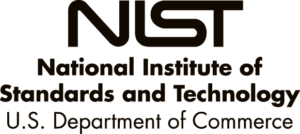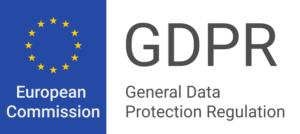In today’s digital age, it’s more important than ever for businesses to ensure they comply with age verification regulations. With governments and regulators worldwide increasingly focusing on protecting minors online, companies that fail to verify their users’ ages properly risk serious legal and reputational consequences. In this article, we’ll explore the importance of age verification and discuss why businesses must pay close attention to this critical issue.
Businesses that require age verification face several challenges, such as ensuring compliance with age verification regulations and keeping up with changing legal requirements. Failure to comply with these regulations can result in serious consequences, including hefty fines, legal action, and damage to reputation.
Moreover, businesses that fail to verify the age of their customers risk exposing themselves to a range of issues, including legal liability for providing minors with age-restricted goods or services and reputational damage for failing to protect minors from potentially harmful or inappropriate content.
Ensuring compliance with age verification regulations can be complex and challenging for businesses. This is especially true for those operating in multiple jurisdictions, where regulations may differ significantly. As a result, many businesses turn to specialized age verification solutions to help them navigate this complex regulatory landscape.
By adopting an effective age verification solution, businesses can help protect themselves from non-compliance risks and improve their overall customer experience. In addition, age verification solutions can help businesses to gain a competitive edge by providing a more secure and trusted online environment for their customers.
What is Age Verification?
Methods for Age Verification
Several methods are available to carry out age verification checks, and businesses can choose the one that best suits their needs. Although it is important to note that each method has its own strengths and weaknesses, businesses should look carefully at each to see if they meet performance and regulatory standards.

Age gating
Age gating is a popular method of age verification used by businesses to restrict access to content, services, or products to a particular age group. It is often used by online platforms such as social media networks, gaming sites, and e-commerce websites. Age gating typically requires users to provide their date of birth or verify their age by checking a box indicating that they are of a certain age.
While age gating may seem like a simple and effective age verification method, it has some significant flaws. One major drawback is that it is easy for users to bypass by simply lying about their age. This can be particularly problematic for businesses with age restrictions to comply with legal regulations, such as those related to the sale of alcohol or tobacco. Companies may face legal sanctions and reputational damage if minors can access these products or services.
Despite its limitations, age gating is still used by many businesses as a quick and easy way to verify the age of their users. However, it is worth noting that it is not a foolproof method, and companies should consider implementing additional, more robust age verification measures to ensure compliance with regulations and protect their users
Identity Document Verification
This method involves checking the authenticity of a document, such as a driver’s license or passport, to verify the person’s age. Document verification can be carried out manually or with Artificial Intelligence, which provides a more accurate score on the document’s validity. This process can be carried out alone or as part of a full identity verification process that includes facial recognition. In some occasions, it can also be verified against a government database to ensure its validity.
Age estimation
Although similar to age verification, age estimation has a different meaning. It refers to the technology that aims to estimate the age of a person based on their physical features. Unlike age verification, which encompasses a combination of methods to ensure the accuracy of an individual’s age, age estimation focuses on utilizing advanced algorithms and artificial intelligence to approximate a person’s age range.
By analyzing facial characteristics such as wrinkles, skin texture, and facial contours, age estimation algorithms can make educated estimations about a person’s age. This technology has been developed through extensive research and training on large datasets, allowing it to recognize patterns and correlations between facial attributes and age groups.
While age estimation technology has shown promising results in estimating age ranges accurately, it is important to recognize its limitations. Factors such as lighting conditions, facial expressions, and individual variations can introduce uncertainties in the estimation process. Therefore, age estimation should be considered a supportive tool rather than a definitive method for age verification.

What regulations in terms of Age Verification exist?
While regulations surrounding age verification exist, it’s important to note that specific methods and guidelines may not be universally defined or clear-cut at this time. However, businesses are still required to implement effective age verification measures to meet regulatory obligations and protect vulnerable individuals.
One example is the Children’s Online Privacy Protection Act (COPPA) in the United States. COPPA requires online platforms to obtain verifiable parental consent before collecting personal information from children under the age of 13. This regulation helps protect children’s privacy and prevents them from accessing inappropriate content or engaging in potentially harmful activities online.
Both the EU’s Digital Services Act (DSA) and Britain’s Online Safety Bill have implications for age verification in the context of online platforms and services.
Under the DSA, online platforms may be required to implement robust age verification mechanisms to protect minors from accessing age-restricted content or services. The act emphasizes the importance of providing appropriate safeguards for minors and aims to ensure that platforms take necessary measures to verify the age of their users.
Similarly, the Online Safety Bill in the UK recognizes the need to protect children and young people from harmful content online. It mandates that digital platforms have effective age verification processes in place to prevent minors from accessing age-inappropriate content. The bill sets out obligations for platforms to implement age verification tools or adopt age assurance technologies to verify the age of their users.
While the specific methods and requirements for age verification may not be explicitly outlined in these legislative initiatives, they provide a regulatory framework that encourages platforms to implement effective age verification measures. The goal is to create a safer online environment for minors, ensuring that they are not exposed to content or services that are not suitable for their age.
It is important to note that the details and specific requirements of age verification may vary between jurisdictions and are subject to further guidance and regulations. However, the overarching goal of the COPPA, the DSA and the Online Safety Bill is to encourage platforms to prioritize the safety and protection of minors through effective age verification processes.
Implementing effective age verification measures not only helps businesses meet regulatory requirements but also fosters trust among users, enhances brand reputation, and mitigates potential risks associated with non-compliance.
What are the costs of implementing Age Verification?
While implementing age verification may seem daunting, it doesn’t have to be. The cost and difficulty of implementation largely depend on the method chosen for age verification. For example, implementing an age gate may be simple, but as previously mentioned, it is not a reliable method for age verification. Other methods like document verification or biometrics authentication for digital onboarding may have higher upfront costs but can save businesses from costly fines and legal issues.
In addition, several age verification solutions are now available that are easy to integrate into existing systems, with minimal impact on user experience.
Overall, the cost and difficulty of implementing age verification should be weighed against the potential risks and consequences of not complying with age verification regulations. Businesses need to prioritize the safety and compliance of their users, as well as their own legal and financial protection.
What are the benefits of Age Verification?
Age verification offers numerous benefits to businesses beyond simply complying with regulations. Firstly, it enhances security by ensuring that only authorized users can access age-restricted content or services, reducing the risk of fraud and identity theft. This leads to higher customer trust, which can translate into increased sales and customer loyalty.
Secondly, age verification provides businesses with greater compliance, which can mitigate the risk of penalties, fines, and reputational damage. In some jurisdictions, businesses can be held liable for the actions of minors who access age-restricted content or services. By verifying the age of their customers, businesses can reduce the risk of these negative consequences.
Lastly, age verification can help businesses to understand their customer base better. By collecting age-related data, businesses can gain insights into the preferences and behaviors of different age groups, which can be used to tailor products and services, improve marketing efforts, and ultimately increase revenue.
While some businesses may be hesitant to implement age verification due to concerns about cost and implementation difficulty, the benefits of age verification far outweigh the potential costs. Many age verification solutions are cost-effective and easy to integrate into existing systems, and some even offer additional features such as identity verification and fraud prevention. Businesses can protect their reputation, increase customer trust, and drive growth by taking proactive steps to ensure compliance and security.
The need to adapt to a changing landscape
In conclusion, age verification is an important process that businesses should pay close attention to as regulators increasingly consider it. Several methods are available for age verification, including age gating, document-based verification, and biometric-based verification. While age gating is simple to implement, it is also easy to bypass and, therefore, not recommended. Document-based verification is a more secure option but can be time-consuming and costly. Biometric-based verification is the most accurate and secure method, although it requires a larger investment in technology.
Businesses that fail to comply with age verification regulations face serious consequences, including fines and reputational damage. However, age verification brings several benefits, including improved compliance, enhanced security, and increased customer trust.
Overall, businesses should prioritize implementing age verification solutions to keep their services safe and compliant and maintain their customers’ trust.
























